
Yesterday, I talked of how geography shapes literature.
If ever you should go to New Orleans looking for Victor Standish and his ghoul friend, Alice,
breakfast at Brennan’s, visit the Aquarium, drink at Pat O’Brien’s, dine at Antoine’s and jazz at Preservation Hall.
You should continue down Bourbon St. following the music and revelers until St. Philip where the crowd thins. If your sixth sense prickles your scalp, it’s time to chart a new course.
The Soyoko, evolved raptors who hunt in the French Quarter's shadows, may be following you.
One block to your right is Royal St. At this time of night it seems like another world. And it is : Rue La Mort.
If you see a fog-shrouded building of iron balconies and heavy moss, bearing the name, Meilori's, listen for a young boy's gypsy laugh and an upbraiding British girl's voice. Listen closely, if there is gravel in the girl's tones, keep on walking.
Alice is growing hungry.
Head instead toward Canal Street in the thick humidity and soon find yourself in back of the St. Louis Cathedral.
The large garden behind the 215 year old church is surrounded by an old iron fence, scarred and pitted by the elements.
What stories could this fence tell? Stories of love and honor, of the duels fought on the grounds it protects, stories of betrayal and murder as well, of plans and plots by patriots and treasonous cowards as well.
And how one foggy night down Pirate's Alley, Victor Standish ran laughing as Hell hissed at his heels. Along its balconies, roof-tops, and streets, Victor race taunting his reptilian pursuers.
But that is for his sequel to describe.
Pirate's Alley you ask?
Oh, there are spirits there!
Souls from long ago who lived and died in these streets with such passion that they refuse to hide in the dusty ruins of the past.
As you push ahead to the end of the fence the air is heavy with a scent of the damp vegetation and you will find your skin is wet.
You breath deeply, swallowing that thick hot air as if you are drowning, and you begin to melt into the city itself, the Vieu Carre, the heart of New Orleans.
Look now to your left, up along the side of the Church. You have discovered PIRATES ALLEY!
Pirate's Alley is the subject of much legend and lore, some true, and much false.
Pirates Alley, about 600 ft long, and 16 ft wide, is not even shown on many of the French Quarter maps.
Wisely so, for many tourists have walked down its foggy length at night never again to be seen.
If it is so dangerous at night, why do tourists dare this avenue?
The sight of the alley at night is unforgettable.
Every surface is covered with moisture giving a shine and a reflection of the dim lights ahead along your path.
On your left, St. Anthony’s Garden, on your right, the old Fleur di Paris hat shop faces Royal St. with its beautiful window display that brings to mind a more elegant time.
But further along, you discover that a plaque on the wall of one of the Creole houses identifies this as the residence of the great William Faulkner, indeed, the very house where he wrote his first novel "Soldiers Pay".
And should the Soyoko find your scent pleasing, you may find "Unwary Tourist Pay."
Or you may find salvation in the form of the legendary undead Texas Ranger, Samuel McCord, the man with the blood of Death in his veins. Like Jean Lafite, McCord is a legend in the French Quarter
Likewise, the Lafitte brothers were no strangers to Pirates Alley.
They came to New Orleans about 1803 the year of the Louisiana Purchase, at 24 and 26 years old. Soon they went about with the Creole gentlemen of town and were seen in the streets and coffee houses.
Jean Lafitte spoke several languages and was educated. A familiar sight on these streets, people would regard him with curiosity, and whisper the word PIRATE! In reality, Lafitte considered himself a Privateer.
Of course, smuggling had been going on in the city for 50 years before Lafitte,
and it eventually became the main business, but soon, Lafitte and his band of Baratarian Pirates controlled black market commerce and all transactions went through the brothers.
Goods were sold openly in Pirates Alley and eventually it became so congested that the "vendors" were allowed to display their goods inside the garden behind the iron fence.
The locals would walk along outside and money and goods were passed through the fence, giving rise to the expression "Fencing stolen goods"!
I imagine that the brothers made regular charitable "donations" to the church for this convenience. No proof, but one cannot help but speculate.
And should you walk this alley at night, keep your eyes over your shoulders. Sometimes Alice the ghoul grows hungry. She, too, looks for donations ... of human flesh.
***
If ever you should go to New Orleans looking for Victor Standish and his ghoul friend, Alice,
breakfast at Brennan’s, visit the Aquarium, drink at Pat O’Brien’s, dine at Antoine’s and jazz at Preservation Hall.
You should continue down Bourbon St. following the music and revelers until St. Philip where the crowd thins. If your sixth sense prickles your scalp, it’s time to chart a new course.
The Soyoko, evolved raptors who hunt in the French Quarter's shadows, may be following you.
One block to your right is Royal St. At this time of night it seems like another world. And it is : Rue La Mort.
If you see a fog-shrouded building of iron balconies and heavy moss, bearing the name, Meilori's, listen for a young boy's gypsy laugh and an upbraiding British girl's voice. Listen closely, if there is gravel in the girl's tones, keep on walking.
Alice is growing hungry.
Head instead toward Canal Street in the thick humidity and soon find yourself in back of the St. Louis Cathedral.
The large garden behind the 215 year old church is surrounded by an old iron fence, scarred and pitted by the elements.
What stories could this fence tell? Stories of love and honor, of the duels fought on the grounds it protects, stories of betrayal and murder as well, of plans and plots by patriots and treasonous cowards as well.
And how one foggy night down Pirate's Alley, Victor Standish ran laughing as Hell hissed at his heels. Along its balconies, roof-tops, and streets, Victor race taunting his reptilian pursuers.
But that is for his sequel to describe.
Pirate's Alley you ask?
Oh, there are spirits there!
Souls from long ago who lived and died in these streets with such passion that they refuse to hide in the dusty ruins of the past.
As you push ahead to the end of the fence the air is heavy with a scent of the damp vegetation and you will find your skin is wet.
You breath deeply, swallowing that thick hot air as if you are drowning, and you begin to melt into the city itself, the Vieu Carre, the heart of New Orleans.
Look now to your left, up along the side of the Church. You have discovered PIRATES ALLEY!
Pirate's Alley is the subject of much legend and lore, some true, and much false.
Pirates Alley, about 600 ft long, and 16 ft wide, is not even shown on many of the French Quarter maps.
Wisely so, for many tourists have walked down its foggy length at night never again to be seen.
If it is so dangerous at night, why do tourists dare this avenue?
The sight of the alley at night is unforgettable.
Every surface is covered with moisture giving a shine and a reflection of the dim lights ahead along your path.
On your left, St. Anthony’s Garden, on your right, the old Fleur di Paris hat shop faces Royal St. with its beautiful window display that brings to mind a more elegant time.
But further along, you discover that a plaque on the wall of one of the Creole houses identifies this as the residence of the great William Faulkner, indeed, the very house where he wrote his first novel "Soldiers Pay".
And should the Soyoko find your scent pleasing, you may find "Unwary Tourist Pay."
Or you may find salvation in the form of the legendary undead Texas Ranger, Samuel McCord, the man with the blood of Death in his veins. Like Jean Lafite, McCord is a legend in the French Quarter
Likewise, the Lafitte brothers were no strangers to Pirates Alley.
They came to New Orleans about 1803 the year of the Louisiana Purchase, at 24 and 26 years old. Soon they went about with the Creole gentlemen of town and were seen in the streets and coffee houses.
Jean Lafitte spoke several languages and was educated. A familiar sight on these streets, people would regard him with curiosity, and whisper the word PIRATE! In reality, Lafitte considered himself a Privateer.
Of course, smuggling had been going on in the city for 50 years before Lafitte,
and it eventually became the main business, but soon, Lafitte and his band of Baratarian Pirates controlled black market commerce and all transactions went through the brothers.
Goods were sold openly in Pirates Alley and eventually it became so congested that the "vendors" were allowed to display their goods inside the garden behind the iron fence.
The locals would walk along outside and money and goods were passed through the fence, giving rise to the expression "Fencing stolen goods"!
I imagine that the brothers made regular charitable "donations" to the church for this convenience. No proof, but one cannot help but speculate.
And should you walk this alley at night, keep your eyes over your shoulders. Sometimes Alice the ghoul grows hungry. She, too, looks for donations ... of human flesh.
***
















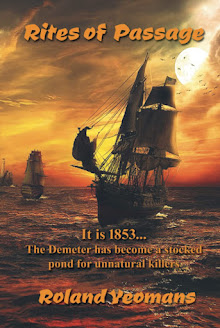




































































































































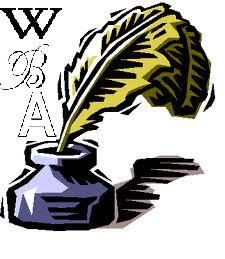





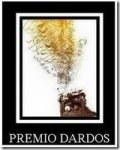

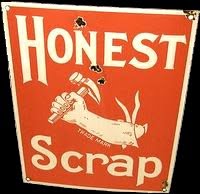


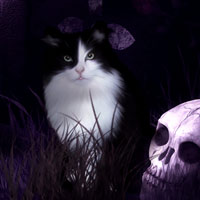




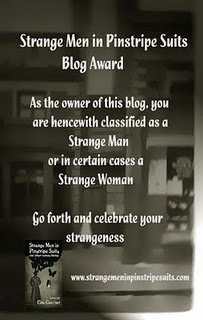




















My dear friends, if any of you are looking for your comments. I have thing to say :
ReplyDeleteI'M AN IDIOT.
I tried to delete the draft for this post and accidently deleted the acutal post. I treasured each of your comments to this post -- especially since they were all so nice. Sigh. I am a man of high hopes and low tech!! Sorry.
LOL!!!!! I was just wondering what had happened. I'm sorry this happened to you, but I'm also glad I'm not the only one who does stuff like this :P
ReplyDeleteIt was an awesome post; it can have a second run!
The Words Crafter has left a new comment on the post "TO DIE IN PIRATE'S ALLEY":
ReplyDeleteI think you should write some travel guides for the City. Gear them toward the adventurous, the literary, the historical, and maybe the hysterical.
That photo is so mysterious looking, full of promise and threat, adventure and menace....and your words lend themselves admirably to it all.
You really do paint with your words....lovely scenes and colorful ironies and tainted atmospheres....if Sam were with me, I'd go down that street at any time of day...or night!
Heather has left a new comment on the post "TO DIE IN PIRATE'S ALLEY":
ReplyDeleteThis post made me want to go to New Orleans so bad! The way you set up atmosphere is fantastic. Loved it!
gideon 86 has left a new comment on the post "TO DIE IN PIRATE'S ALLEY":
ReplyDeleteOh, what a mysterious and haunting picture. I visited New Orleans, once and recall several of the places you have mentioned, but I didn't get to visit Pirates Alley.
How cool to live so close to a city so rich in history and well as mystery.
Chicago boost beautiful tree-lined streets, miles of park and lake, but it doesn't hold the mystery and the intrigue as New Orleans.
You captured your city well, Roland.
TechnoBabe has left a new comment on the post "TO DIE IN PIRATE'S ALLEY":
ReplyDeleteDid you take the photo? Nice. Great light and colors. I have not been to New Orleans since Katrina but I am so glad that the spirit of New Orleans is "alive and well". The 215 year old cathedral would have enough stories to share to fill a few books.
Laurita has left a new comment on the post "TO DIE IN PIRATE'S ALLEY":
ReplyDeleteThis place is not a setting, it is another character. Now I feel the need to see it - maybe in the light of day...
VR Barkowski has left a new comment on the post "TO DIE IN PIRATE'S ALLEY":
ReplyDeleteAh Roland, you've captured the mood perfectly! Pirate's Alley is one of my favorite spots in all New Orleans. I love the colors of the buildings, love peeking at the cats scurrying around St. Anthony's garden at the back of the cathedral, and Faulker House is an amazing bookstore. But this is all during the day. You will *never* catch me there at night. I know there are spirits that lurk in Pirate's Alley and probably in Pere Antoine Alley as well.
V.R. : That's high praise coming from you, someone who loves New Orleans and is familiar with its allures and legends. Pirate's Alley is one of my favorite spots in New Orleans as well.
ReplyDeleteYou're right. Pere Antoine Alley is rich in legends and stories and how could it not?
For those of you, unlike V.R., that do not know : Friar Antonio de Sedella came to New Orleans around 1774 with the Spanish Inquisition in Louisiana.
Never an enthusiastic inquisitor, over the course of a few years, Father Sedella became the beloved Pere Antoine, the pastor of the (then) St. Louis Church.
He baptized Marie Laveau, performed her wedding ceremony, and together with her did much for the imprisoned,
as well as the slave population, in New Orleans.
Many people report having seen Pere Antoine walking slowly down the small alley named for him alongside his St. Louis Cathedral.
He is mostly drawn to the early mornings when the French Quarter is quieter,
but has also been discovered disappearing into the mist of a winter afternoon.
In these sightings, he usually doesn't appear to notice anyone because he is almost always reading his breviary, or book of prayers.
People who have seen him like this experience a feeling of comfort, no matter what they have been doing the night before!
He even helped Victor during his run from the Soyoko. Oh, New Orleans is a mysterious, haunting lady.
Mary Vaughn has left a new comment on the post "TO DIE IN PIRATE'S ALLEY":
ReplyDeleteNew Orleans,welcomes you with the open arms of a charismatic villain. Trust her because of her beauty and shy may slay you with her smile.
I *see* what you have written.
Really excellent description. I felt like I was walking around in google-earth.
ReplyDeleteSorry for your techy problems. I can totally relate . .
.......dhole
Donna : I'm glad I could paint a vivid picture of the magic of the French Quarter for you, Donna. And I felt like a Noodle after deleting my post! LOL.
ReplyDelete